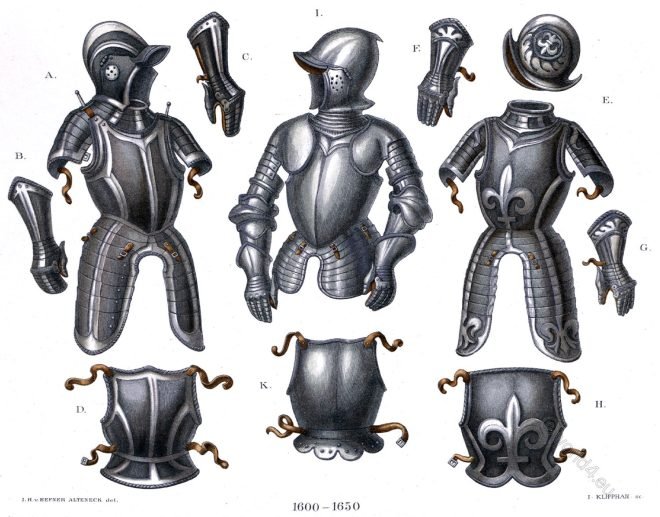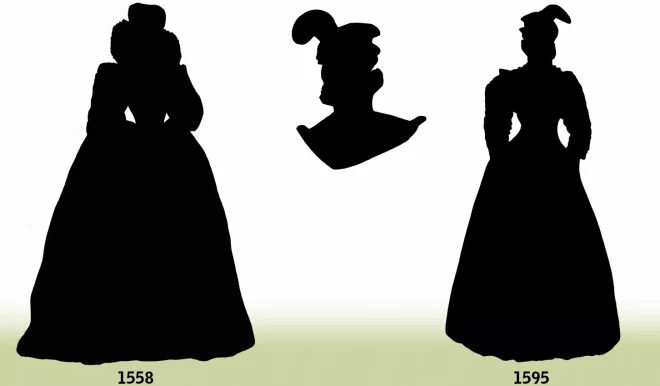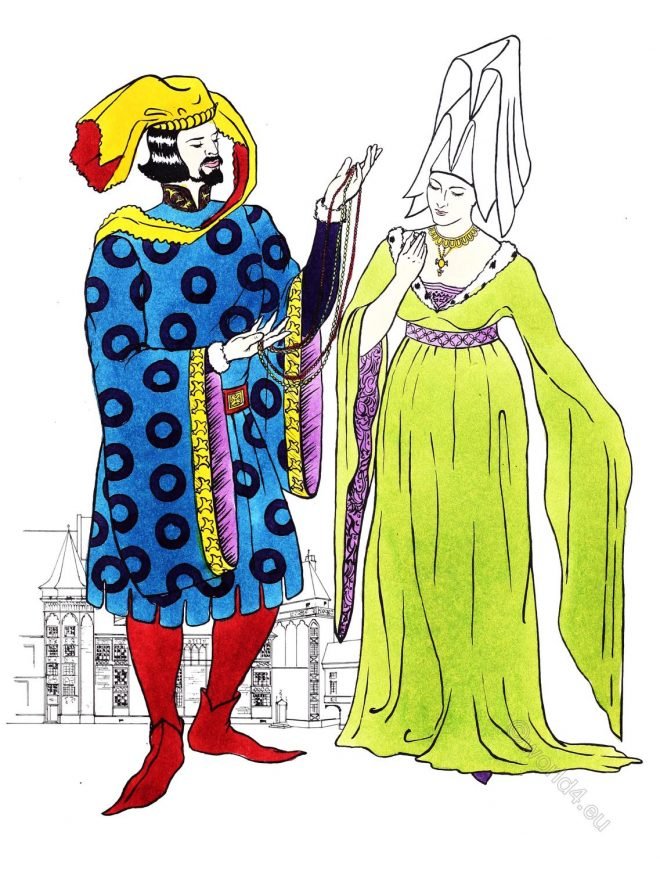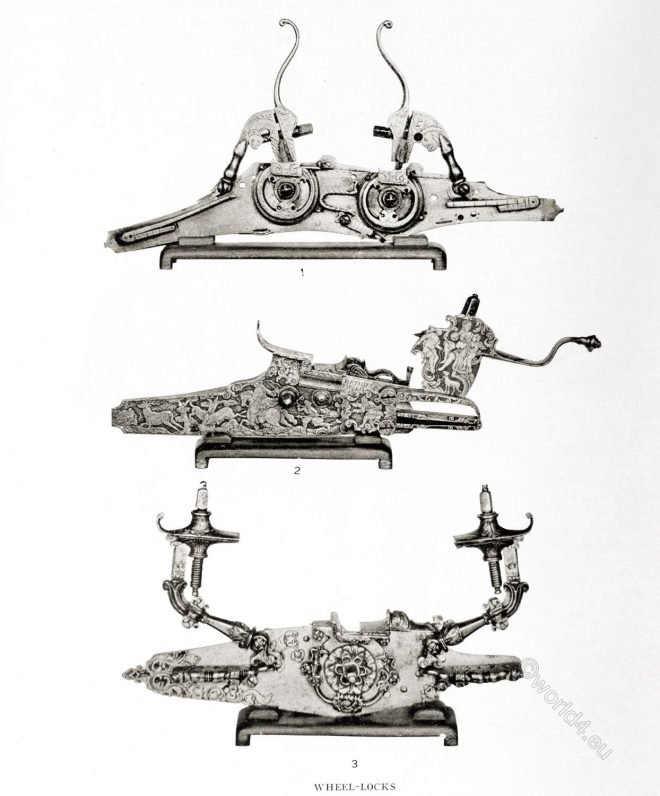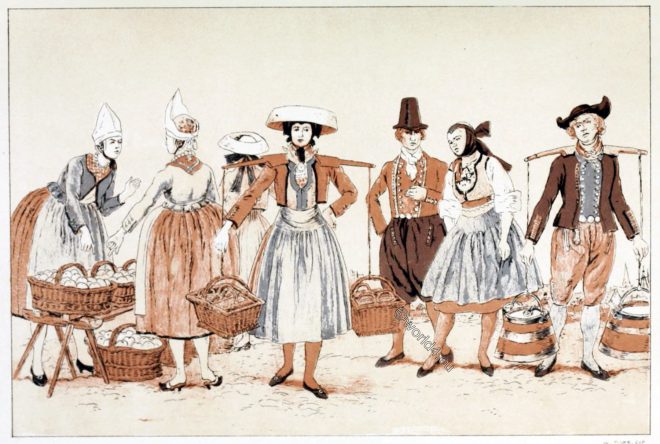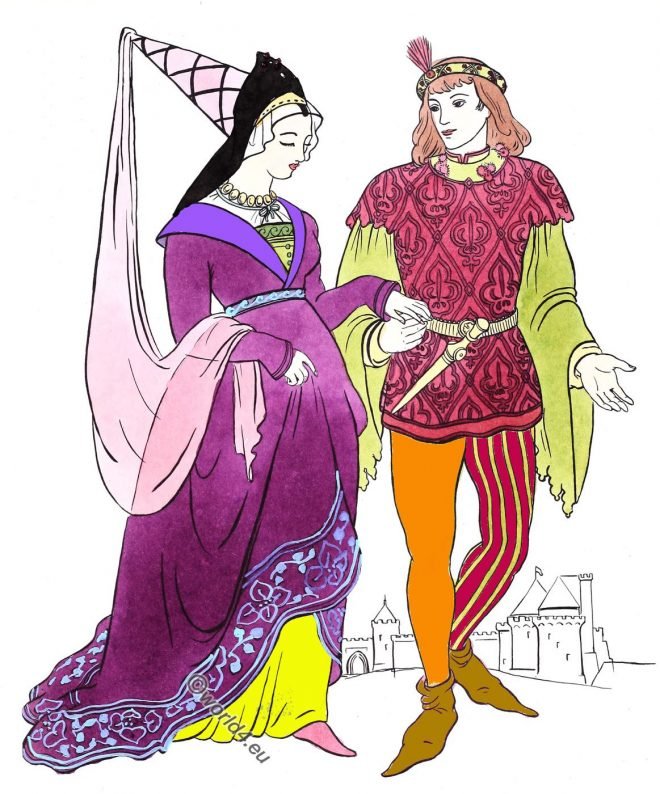Three complete sets of half-armour from the first half of the 17th century. They show the most essential characteristics of the armour worn
Category: Germany
Medieval Garb of German Noble Ladies and a Duke, 13th century.
German Gothic Fashion. Noble ladies in the cotehardie. Prince in the houppelande. On the history of costumes.
The introduction of the vertugale. Costume silhouettes.
Costume silhouettes of the sixteenth century changed rapidly with the introduction of the corset, the basquine, the hoop skirt, or vertugale.
The Fashion of Mi-parti. Clothing of the Middle Ages.
The mi-parti, the wide bag sleeves, like the long jagged or cogged surplices are repeated here in the most varied applications and changes.
The costume worn in the late 14th or early 15th century.
History of Costume. The chaperon, cote-hardie, houppelande, liripipe, poulaines. Fashion of the middle ages.
Specimens of wheel-locks, gun-locks of 16th, 17th, and 18th century.
European Hand Firearms of the Sixteenth Seventeenth and Eighteenth Centuries, by Herbert J. Jackson.
Historic Black Forest costumes from today’s Titisee-Neustadt.
Titisee-Neustadt, popularly known as the Forest Town (especially the Neustadt district), is a town in the southwest of the German state of Baden-Württemberg
Folk costumes from Hamburg and its surroundings.
Fruit seller from the Alte Lande. Vierlander men’s costume. Vierlander woman in dance attire. Milkman from the Hamburg area.
Historical tools of corporal punishment of earlier centuries.
Instruments of torture. Shame mask, thief catcher, thumbscrews, iron collar, branding iron. Middle Ages and modern times.
Cotehardie, Houppelande and Hennin. Fashion of the late 14th century.
The two people in this plate lived very late in the 14th Century and were probably young fashionables who were up to the minute in their styles.

